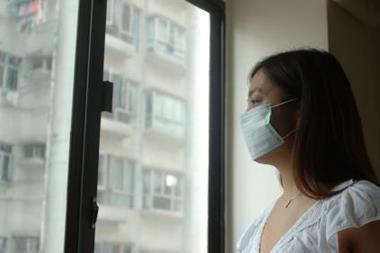Just when you thought things couldn’t get any worse, along comes swine flu to knock us all for six. So what can insurers expect – a near miss, some scary turbulence or a full-scale emergency landing? Saxon East takes us through the possible scenarios
Since the first outbreak of swine flu in Mexico a fortnight ago, it has swept across international borders including into the US and the UK. Governments, businesses and schools are hurriedly reviewing emergency plans to keep a lid on its spread. Stockpiles of antivirals are being built up and comparisons are being made to the deadly Spanish flu that struck at the end of the First World War, killing millions. Everyone’s worried, not least the insurance industry.
It’s facing claims related to Mexico, which may be swiftly followed by the rest of the world. Elsewhere, risk managers continue to pump out advice on what we should be doing to avoid the worst. While swine flu will be a huge test for companies already struggling in the downturn, insurers face possibly their greatest test for years if the virus develops into a pandemic.
Trevor Maynard, Lloyd’s emerging risks team manager, warns: “A major pandemic is thought likely to cause a global recession – given the current financial state of the world’s economy, a pandemic could not be worse timed. At present, however, there is good reason to hope the impact of this flu will be manageable.”
As Insurance Times went to press, the insurance industry was keeping a watching brief. With the scale of any potential pandemic still unclear, insurers were unwilling to comment on their contingency plans. But there is no doubt that the worst case scenario would be devastating.
WORST CASE SCENARIO
Most of these scenarios are based on what happened during the Spanish flu that spread throughout the world between 1918 and 1920. The Spanish flu claimed between 20 million and 100 million lives – more than the First World War. It was spread by troop movement and the mortality rate was around 2.5%.
The virus strain of swine flu – H1N1 – is actually a descendant of the Spanish flu, one of the reasons there is so much fear a pandemic could have devastating consequences. If swine flu is as virulent as its Spanish sister virus, then it could claim as many lives, despite improved medical care and antivirals.
A Lloyd’s pandemic report, published by its emerging risks team, examines the economic impact of a pandemic as severe as the Spanish flu. The US would lose about 5% of its gross domestic product, and sectors of the economy such as accommodation and food, and arts and entertainment would experience a 20% loss to their industries.
The financial markets, still struggling to recover since the credit crisis that began in September last year, would suffer a second devastating battering. The FTSE 100 would drop as much as 25% in just a few months as investors dumped shares while stepping up their “flight to quality” by purchasing government securities.
As companies looked to cut their costs, huge lay-offs would take place, further deepening unemployment figures, and perhaps sparking a global depression.
In a globalised world, many multinationals have supply chains across the world. Suppliers in emerging countries, which do not have the medical and organisational proficiency of developed countries, are most likely to be hit. Many could go out of business.
Alex Hindson, head of enterprise risk management at Aon, says: “The world out there is pretty brittle in terms of confidence with the financial crisis. The last thing we need is a pandemic.”
CLAIMS IMPACT ON THE INSURANCE INDUSTRY
Travel, business interruption and event cancellation are just a few areas where insurers potentially face their first raft of claims. As the pandemic deepens, credit insurance, public and employers liability, professional indemnity and directors and officers (D&O) would all come under fierce pressure.
Reports by both Marsh and Lloyd’s highlight some of the areas in which insurers face claims:
Travel
Under travel insurance, policyholders can claim for lost deposits or other costs. While travel claims are unlikely to cause significant solvency problems for large diversified insurers, it is possible that the profits from this line of business would take many years to recover, the Lloyd’s report says.
Business interruption
The UK market has a general availability in its cover for “infectious disease”. The clause typically covers a three-month indemnity period with limits in the range of £500,000 to £5m, Marsh says. However, the dependence on payout would come down to the contract wording.
Credit insurance
For a large pandemic there could be insolvencies, which could lead to payments from credit insurers. Those providing credit life or accident and health cover can also expect to payout, Lloyd’s says.
Product liability
If there is a faulty air conditioning system that spreads the disease through an aircraft, entertainment venue or office building, it could lead to a class action against the manufacturer.
Employer’s liability
Policies covering up to £5m of claims, for a single case, are compulsory for most UK businesses. An employee would have to prove legal liability that they were put at risk. For example, a hospital worker could pursue a claim if they could prove that their employers had not taken proper care of their safety. Other disputes might arise around the availability of masks and antivirals, standards of cleanliness and when they were told to work.
Cancellation and abandonment
Policies placed before swine flu was deemed to be a threat will not have an exclusion clause, Marsh says. Any event that has to be cancelled due to swine flu is likely to be paid. This could include business seminars, sports events and pop concerts. The event manager would have to prove the event was impossible to stage because of the pandemic, but this would not be difficult if public transport is severely restricted or the government has advised people stay at home.
Environmental impairment liability coverage (EIL)
Companies may have taken a distinct policy for injury or damage arising out of contamination or pollution. This could relate to a company that has a spread the virus through its air conditioning system. The virus might spread to other parts of the building and possibly the surrounding area, leading to a no-go zone.
Directors and officers
Businesses that did not properly plan for flu pandemic are most at risk as investors could then sue the directors for loss of shareholder value. The Chartered Management Institute reported in March that 53% of companies still do not have adequate plans to cope with the threat of a pandemic.
Hosted by comedian and actor Tom Allen, 34 Gold, 23 Silver and 22 Bronze awards were handed out across an amazing 34 categories recognising brilliance and innovation right across the breadth of UK general insurance.













































No comments yet